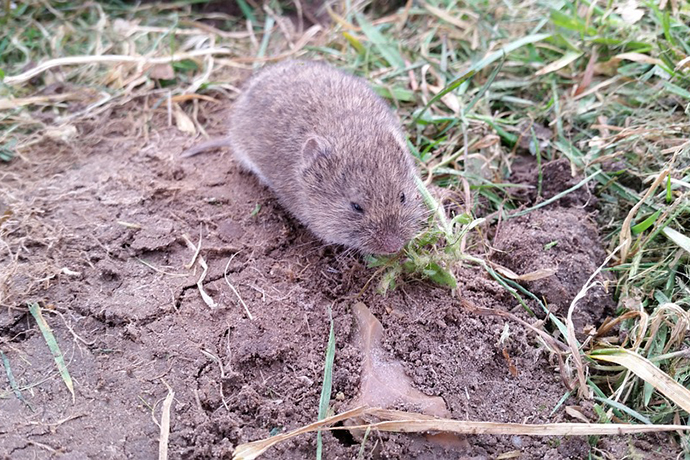Ask an Expert: Five Tips to Prevent Vole Damage
 As the snow melts, it becomes obvious that field mice, or voles, have damaged many lawns and ornamentals. During the winter, voles move about under the protection of snow cover and create unique surface runway systems with numerous burrow openings. Runways are 1 to 2 inches in width, and vegetation near well-traveled runways is often clipped near the ground. Feces and small pieces of vegetation can usually be found in the runways.
As the snow melts, it becomes obvious that field mice, or voles, have damaged many lawns and ornamentals. During the winter, voles move about under the protection of snow cover and create unique surface runway systems with numerous burrow openings. Runways are 1 to 2 inches in width, and vegetation near well-traveled runways is often clipped near the ground. Feces and small pieces of vegetation can usually be found in the runways.
Voles may cause extensive damage to ornamentals and tree plantings by girdling, or chewing around, seedlings and mature trees. Girdling from voles usually occurs in the fall and winter and may not be discovered until the snow melts in the spring. It occurs in irregular patches at ground level with the size of gnaw marks approximately 1/8 inch wide by 3/8 inch long and 1/16 inch or more deep.
If your lawn has been damaged by voles, rake out the dead grass as soon as possible. This will allow grass crowns to start growing sooner so the lawn can heal more quickly during the summer. Young trees that have been girdled more than 50 percent around the trunk will have a low survival rate. Tree wound dressings will not help the damaged area. Try to reduce stress to the tree by applying the proper amount of water and fertilizer during the growing season.
To help prevent vole damage from occurring next year, consider these tips.
- Decrease the height and density of ground cover, and mow your lawn very short the last mowing of the fall. This can decrease the suitability of an area for voles.
- Place hardware cloth cylinders around the base of young trees to protect them from voles. The mesh should be 1/4 inch or less in size and should be buried 3 inches below ground level to prevent voles from burrowing under the cylinder. Cylinders should be higher than the typical snow-line level.
- Provide at least a 3-foot bare soil swath around the base of trees — especially young trees — to prevent voles from gnawing on the bark.
- Place bait stations with poisonous vole bait in areas where voles have been in the past. Do this in the fall just before the first heavy snow storm. Bait stations prevent consumption by non-target animals and pets. Be sure to read labels carefully before using.
- If feasible, provide a 6-to-8-foot bare soil strip between your yard and the native habitat of voles.
Answer by: Sterling Banks, Utah State University Extension associate professor
Direct column topics to: Julene Reese, Utah State University Extension writer, 435-797-0810 or julene.reese@usu.edu.


 Utah 4-H & Youth
Utah 4-H & Youth